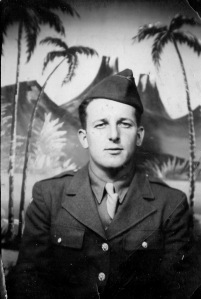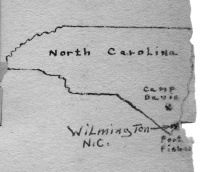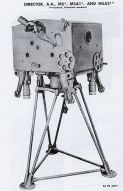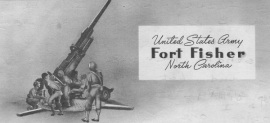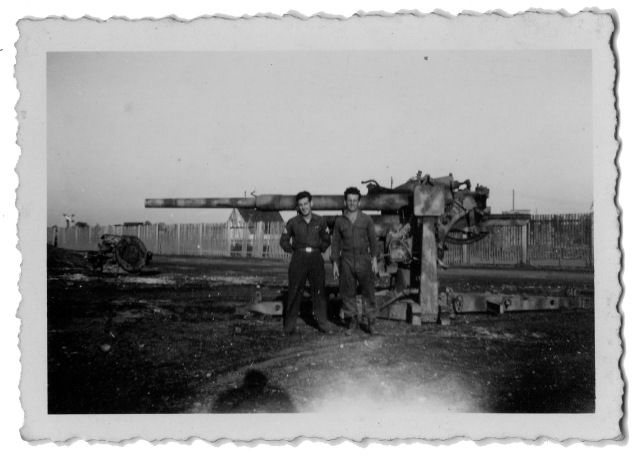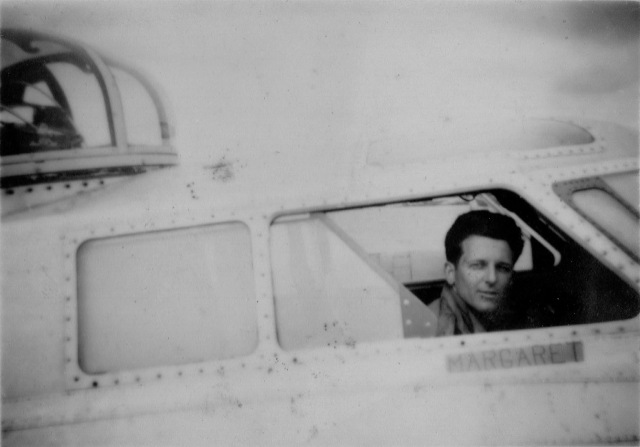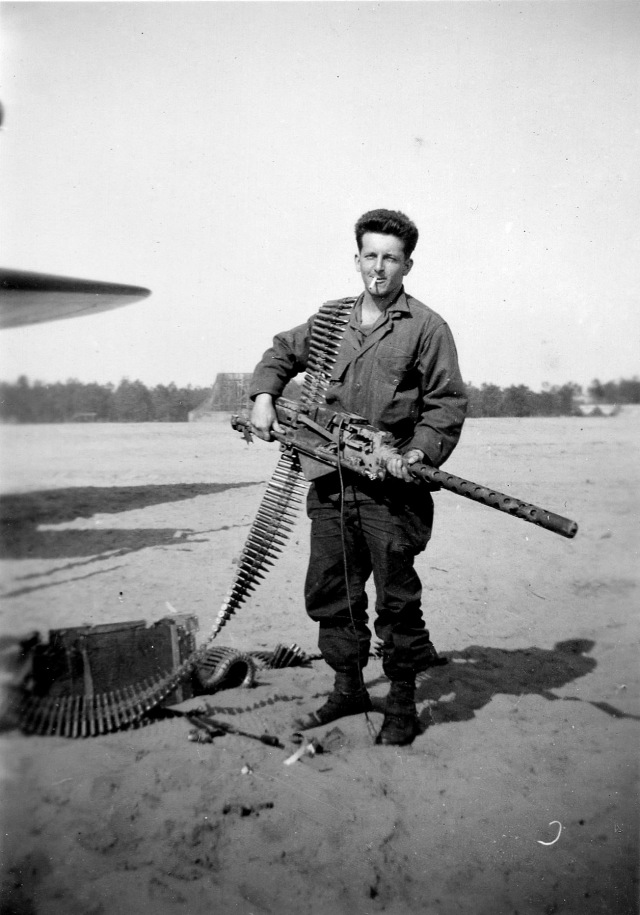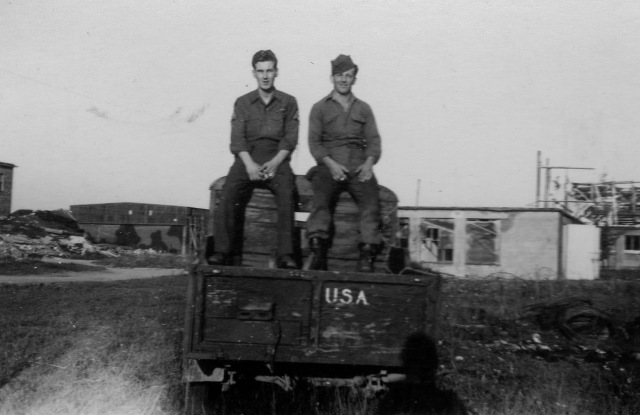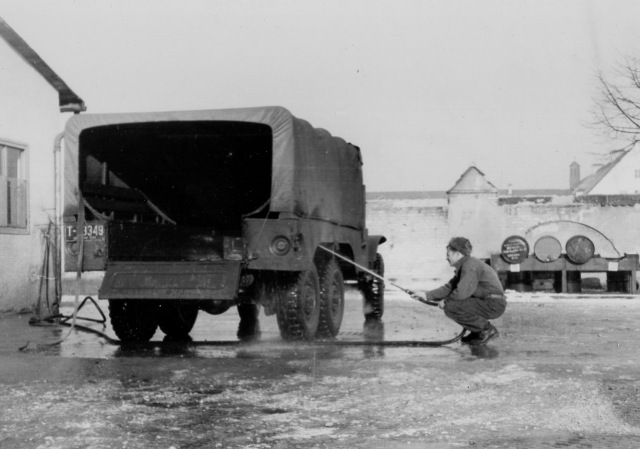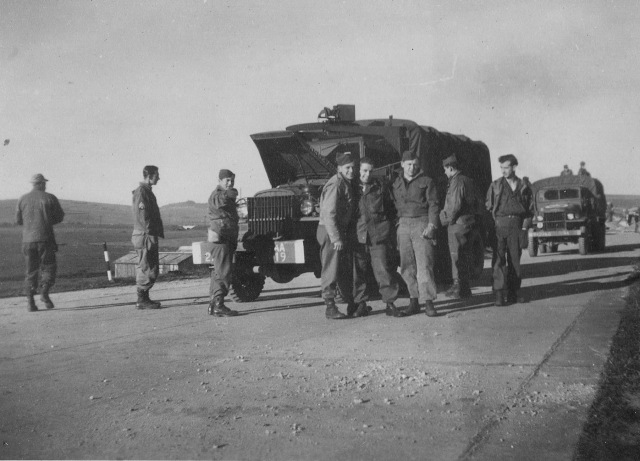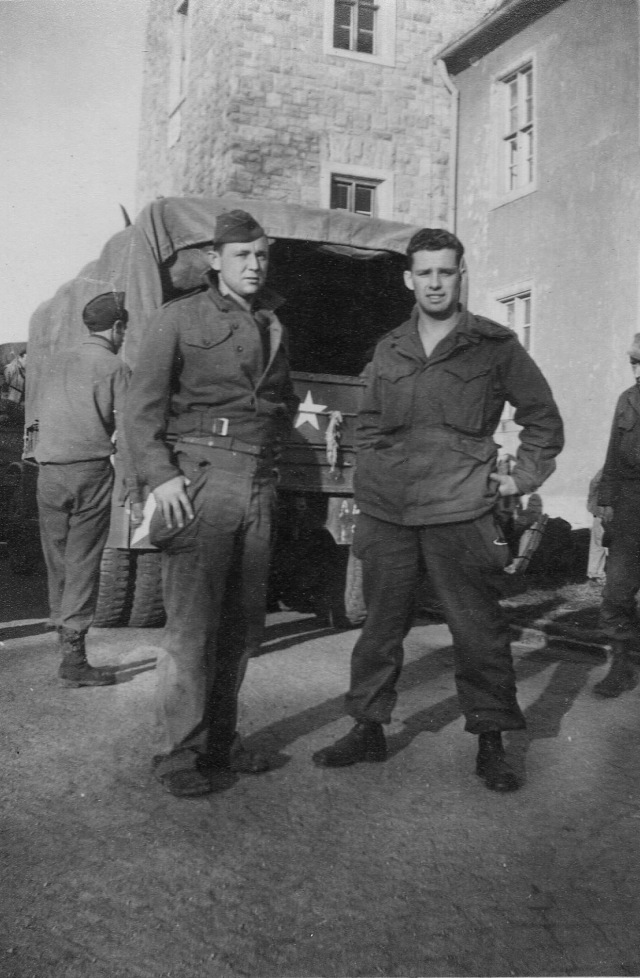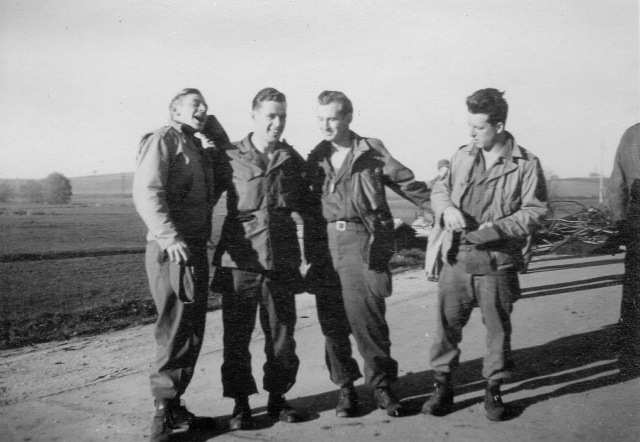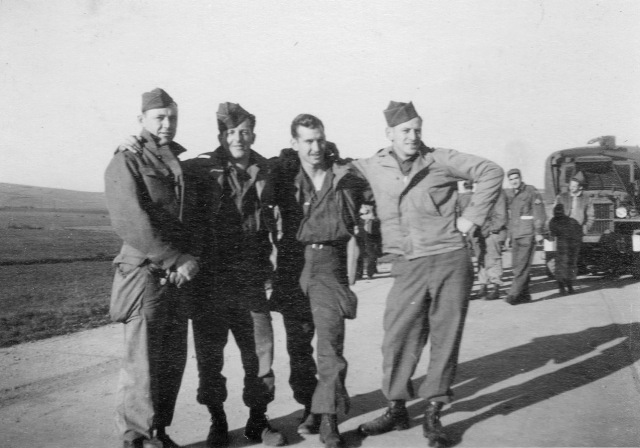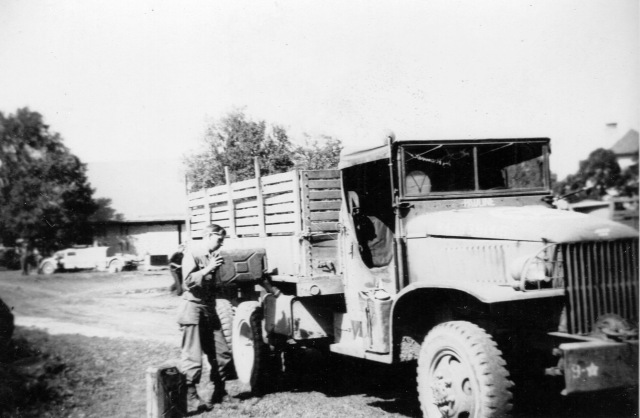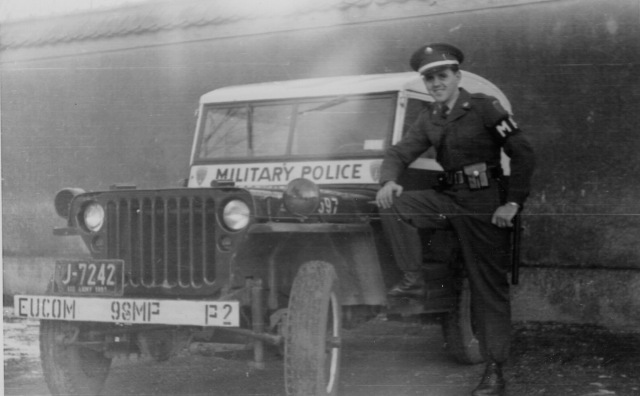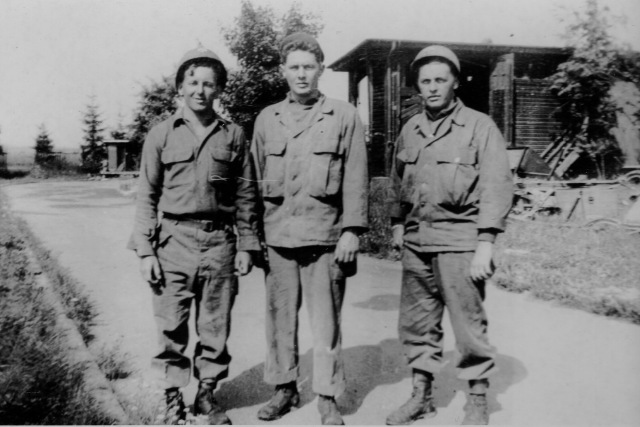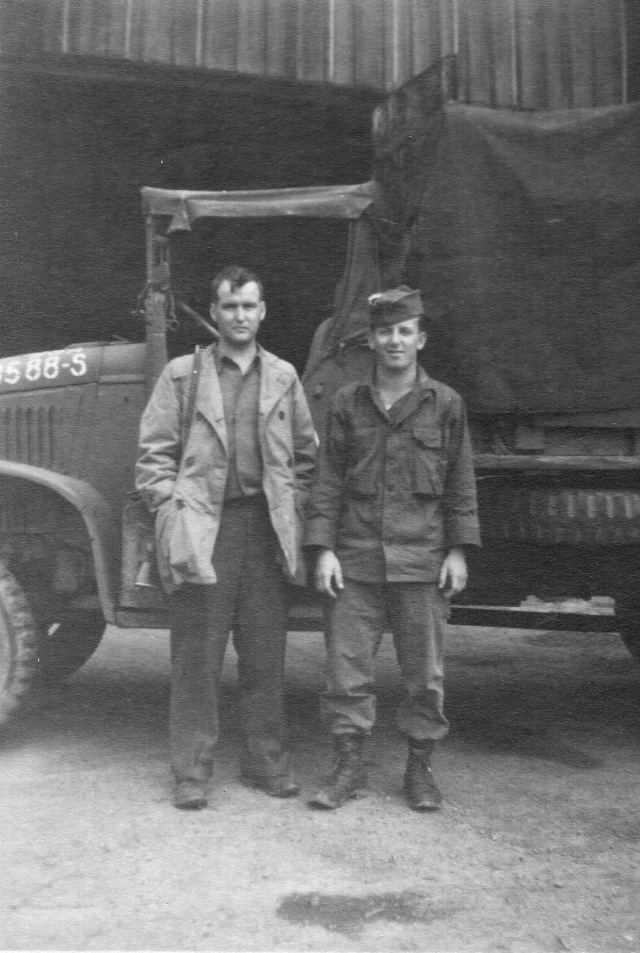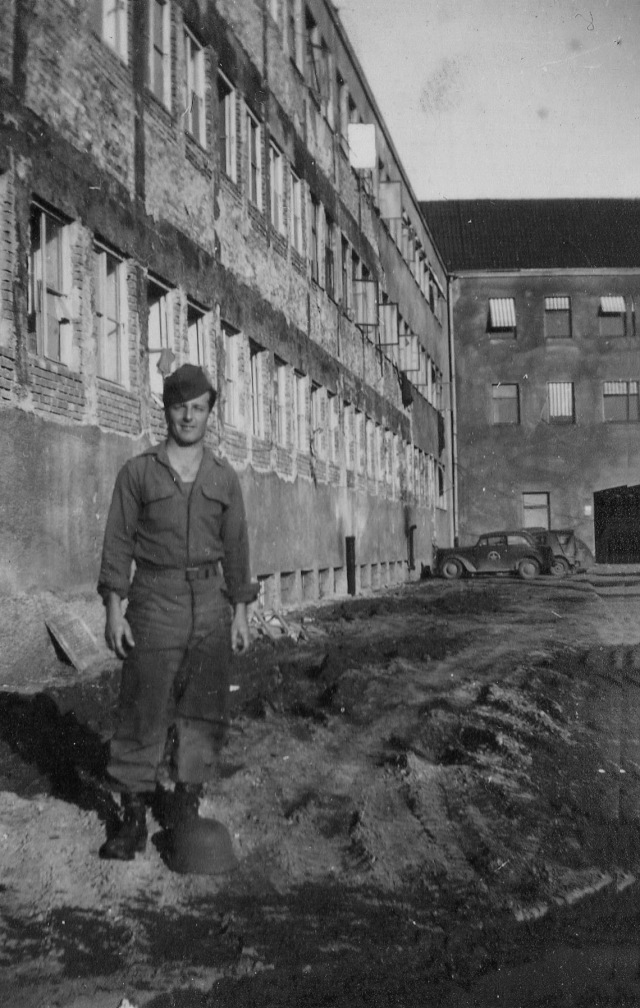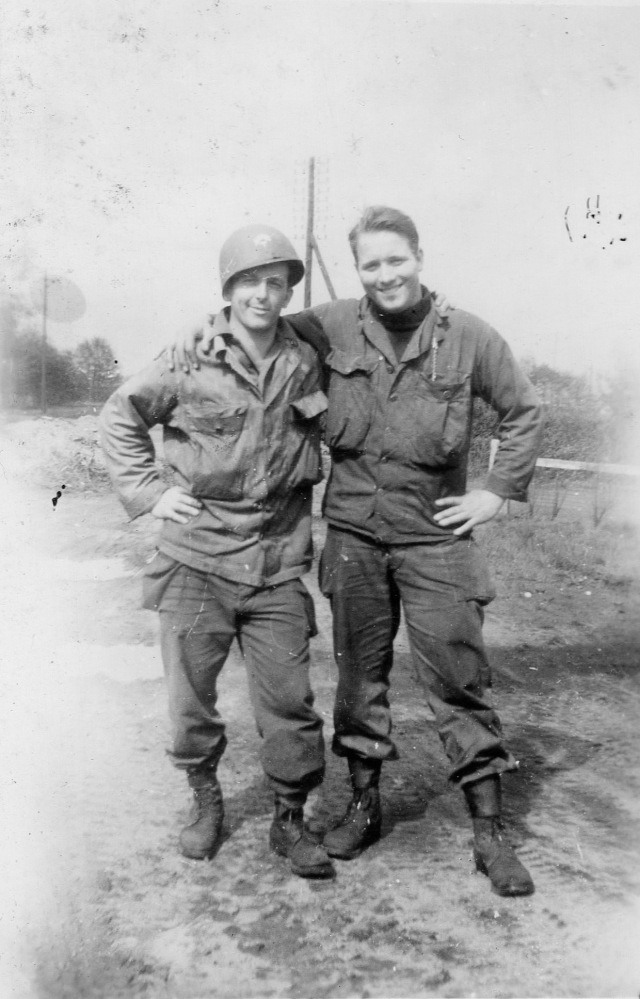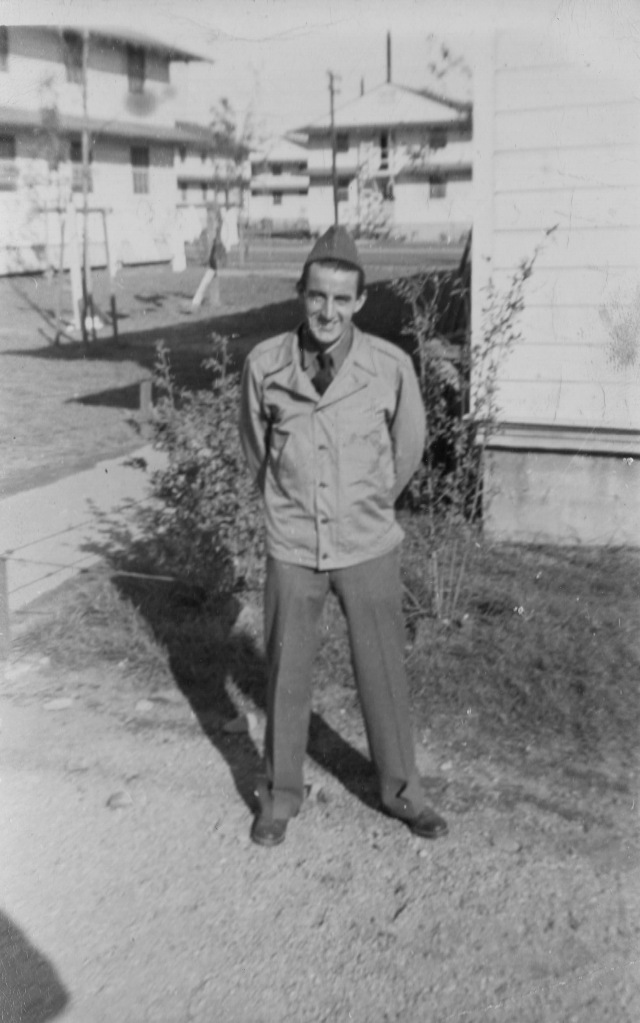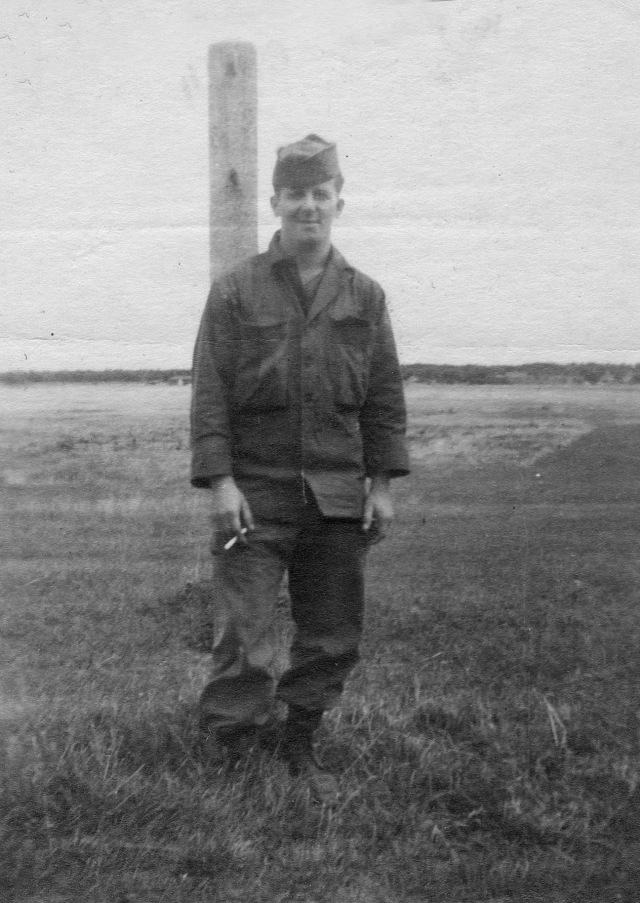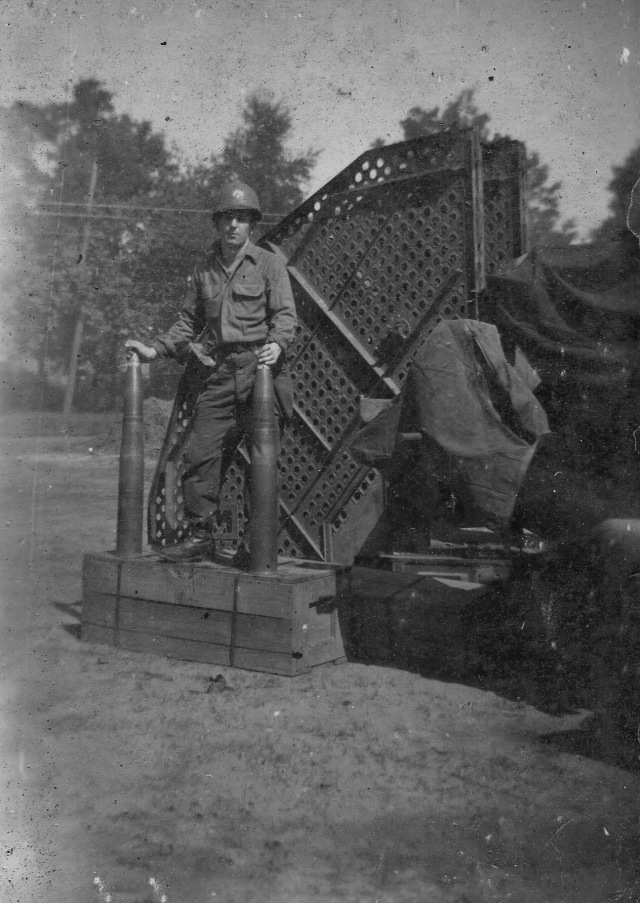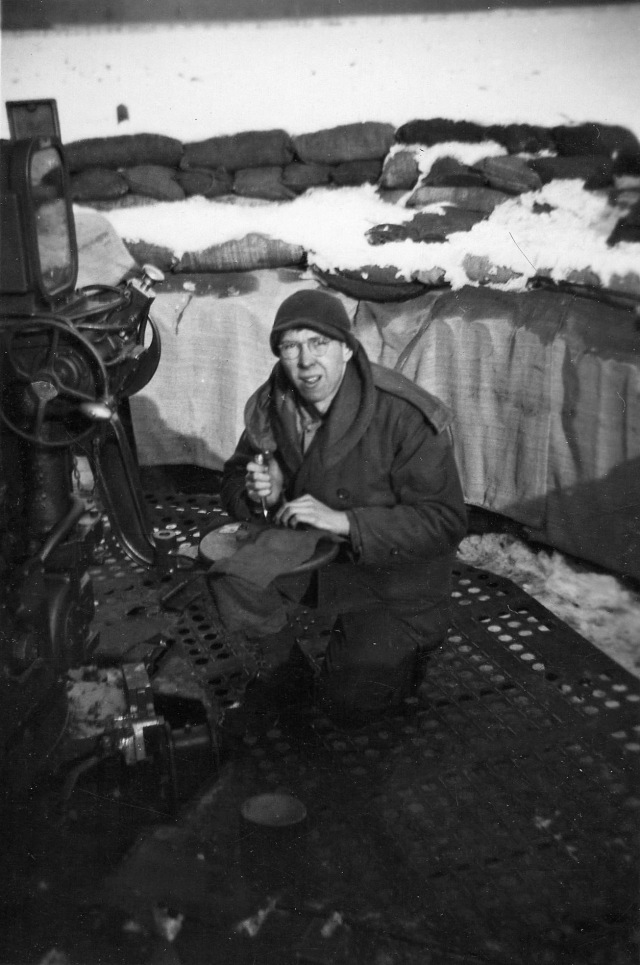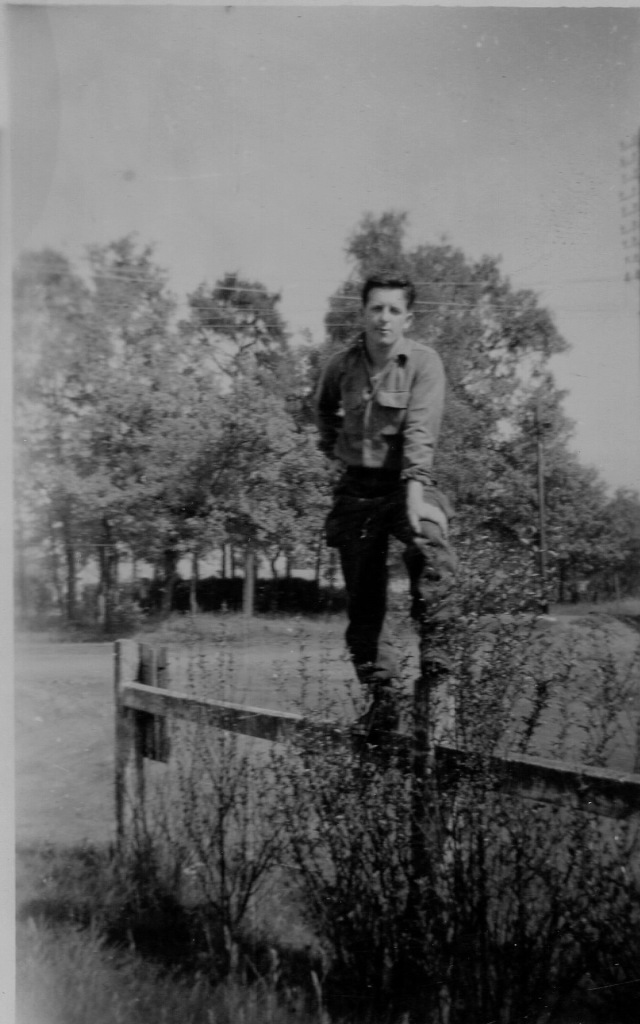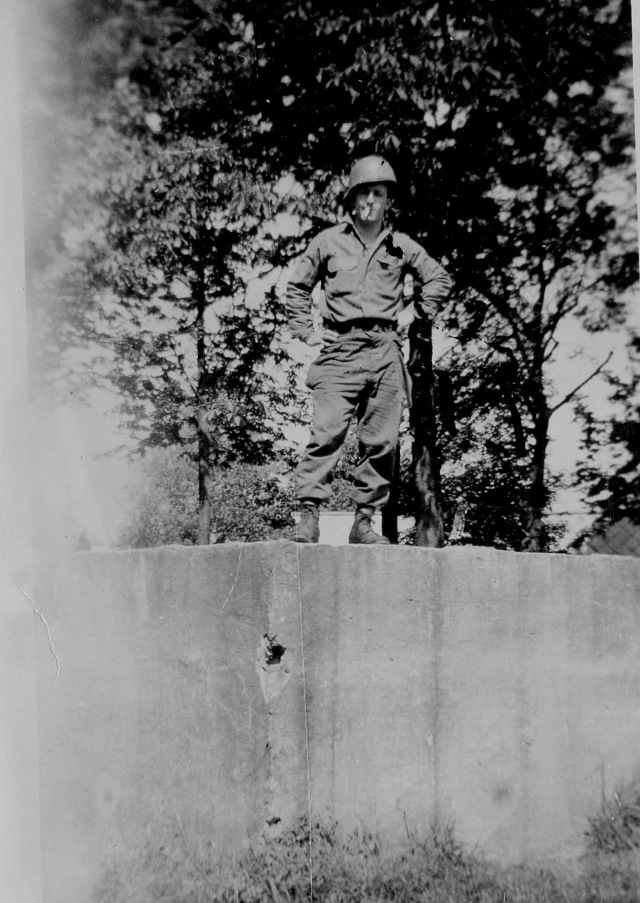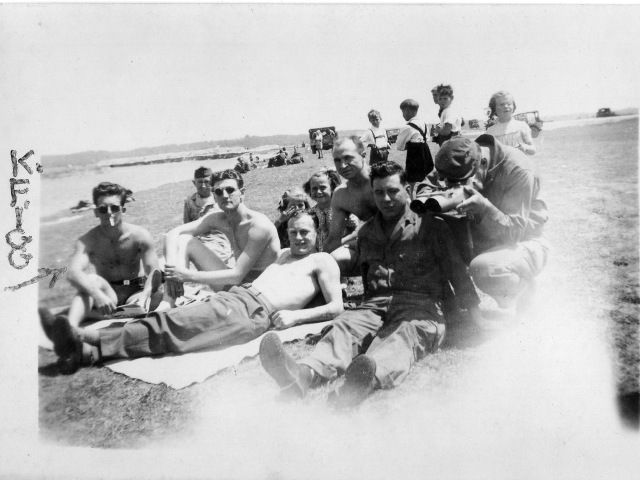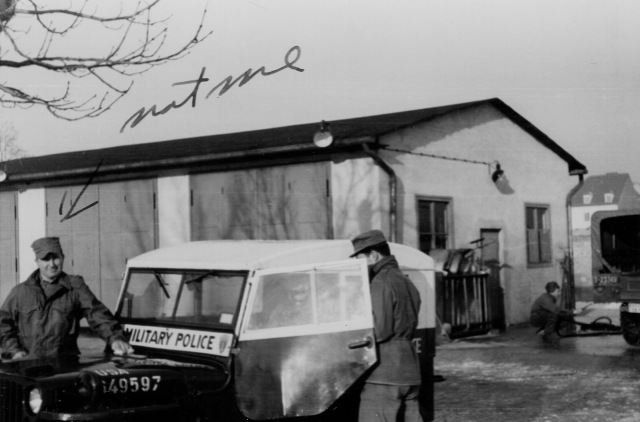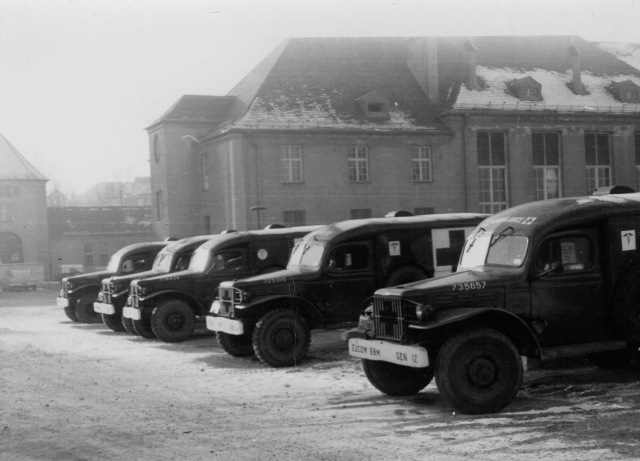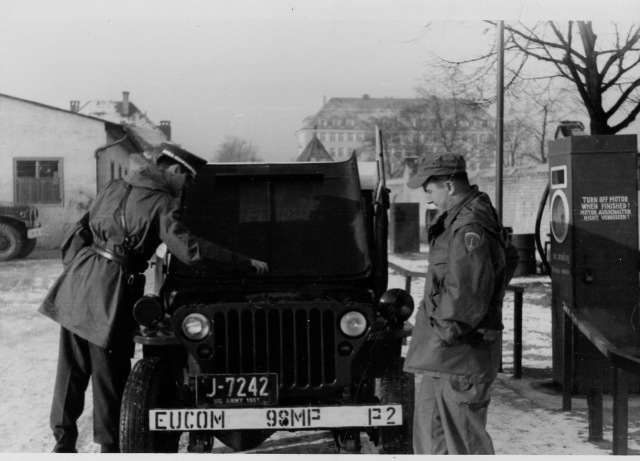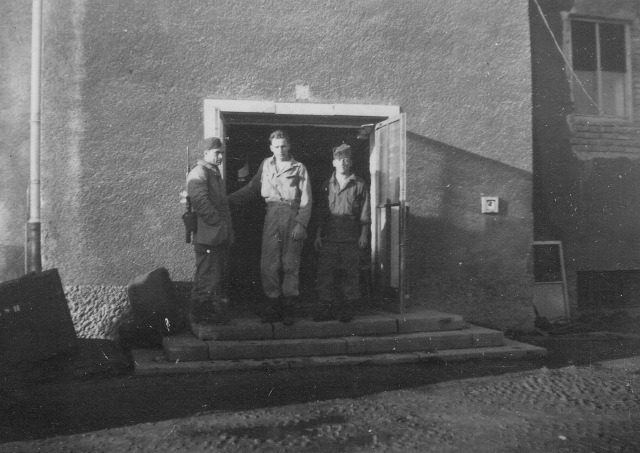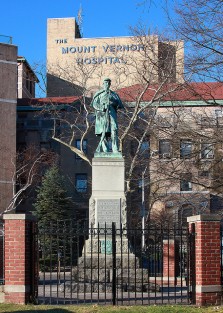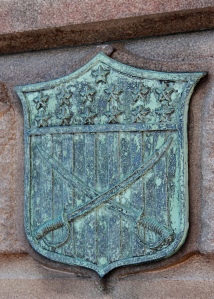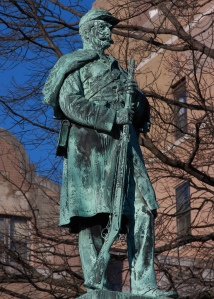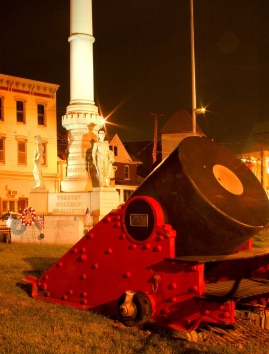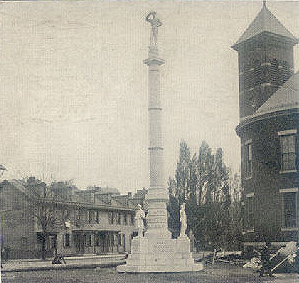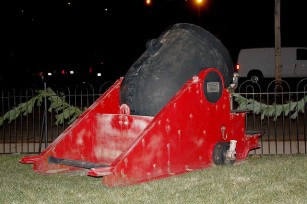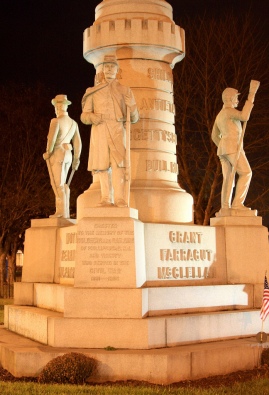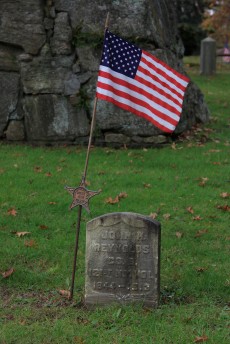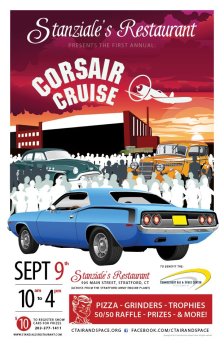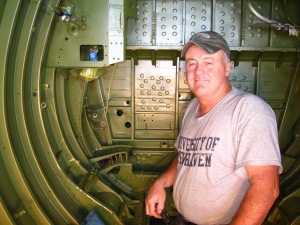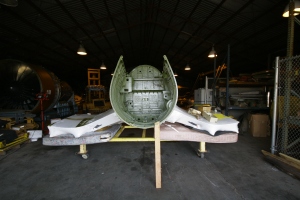So Many Memories
We received a box of tattered scrapbooks at the shop. They were donated and we were amazed to see some of the images contained with in.Kenneth Figg was a resident of Fishers Island, New York, just off the coast of Connecticut (near Mystic). Kenneth was born June 12th, 1920. He enlisted in the US Army for 3 years during World War two and received four battle stars. They included Normandy, Northern France, The Bulge and The Rhineland. He was married to Marianna Gabriel in 1954. He moved to Bridgeport Connecticut and worked for Heppenstall Company in Bridgeport.
His Grandmother was Eva Sears from 20 Pearl Street in Bridgeport.
Figg served in the US Army during World War Two. He was with the 274th Ordnance Maine Company, Anti Aircraft. The collection of papers that were about to be lost to history reveal a detailed history of a a few years of Figg’s life in the Army. In his own words I will present this forgotten soldiers life.
January 4, 1942 – Sworn into the Army at Hartford, Conn.
January 12, 1943 – Reported at Fort Devens, Mass and stayed there 2 1/2 days.
In 1940, at the onset of World War II, Fort Devens was designated a reception center for all men in New England who would serve one year as draftees. A massive $25 million building project was begun, including more than 1200 wooden buildings and an airfield. (1)
January 15, 1943 – Got on troop train and went across Mass., NY., Penn,.Ohio, Indiana, to Chicago, Ill., then down through Ill., Ky., Tenn., to Miss.
January 18th, 1943 – Arrived at Camp Flora, Miss. Located about 25 miles from Jackson, Miss.
January 19, 1943 – Started Basic – Training in the Army.
February 23, 1943 – Boarded troop train for Camp Davis, N.C.. Went through Miss.,Ala., Ga., S.C. to Camp davis.February 27. 1943 – Arrived at Camp Davis, N.C. for Continued training.
April ?, 1943 – Went to school at Sears Landing for over two weeks – Took up the height – finder. Also took up two weeks of schooling on the M5 director and a week on the oil gears for the 40MM guns.
May 28, 1943 – Promoted to T/5 and ordered to go to the ordnance school at Aberdeen, Md.
In August 1942, the Ordnance Department assumed responsibility for procurement and maintenance of all wheeled and motored vehicles. Aberdeen Proving Ground (APG) is the U.S. Army’s oldest active proving ground, established on October 20, 1917, six months after the U.S. entered World War I. At the peak of World War II, APG had billeting space for 2,348 officers and 24,189 enlisted personnel.(5)
June 1, 1943 – Left Camp Davis for Aberdeen – Went to New London by train with George Conklin. We had 16 hours there before going to Aberdeen.June 3. 1943 – Arrived at Aberdeen, Md. – studied the M5 director which was a four week course.
July 3, 1943 – Graduated from school and left for a furlough.
July 4, 1943 – Got home and my furlough started.
July 14, 1943 – Arrived at Camp Davis but found out the company had moved to Fort Fisher, N.C. Located 50 miles away and on the Carolina Coast. Rejoined the Company a few days later.
July, August, September 1943 – spent the Summer at Fort Fisher.almost one year before the surprise attack by the Japanese on Pearl Harbor construction was started on a new military camp in Holly Ridge, N.C.. Camp Davis was in business by the spring of 1941. It was one of the seven Anti-Aircraft artillery training facilities in the United States. This is were a young man from Fishers Island, NY would spend his days and nights learning the finer points of the 40mm Anti-Aircraft Gun. (2)
Fort Fisher’s claim to fame was as a Confederate fort during the American Civil War. It protected the vital trading routes of the port at Wilmington, North Carolina, from 1861 until its capture by the Union in 1865 by an seaborne invasion force of 8,000 Union soldiers, sailors & marines who landed and took the fort by force. (3) This would serve as shades of thing to come in June of 1944 along the coast of France.
Fort Fisher became a live fire range during World War two with target tug aircraft flying from Camp Davis, providing Searchlight & gunners a target rich environment. (2)
September 1943 – We moved back to Camp Davis still continuing our training.
December 24, 1943 – Left on three day pass for Charlotte, N.C. with four other fellows. We received this in place of a second furlough home.
January 11, 1944 – We left for Camp Kilmer, N.J. to prepare to go overseas.
Camp Kilmer, New Jersey is a former United States Army camp that was activated in June 1942 as a staging area and part of an installation of the New York Port of Embarkation. The camp was organized as part of the Army Service Forces Transportation Corps. Troops were quartered at Camp Kilmer in preparation for transport to the European Theater of Operations in World War II. Eventually, it became the largest processing center for troops heading overseas and returning from World War II, processing over 2.5 million soldiers.(4)
January 18, 1944 – We boarded the “U.S.S. Exceller” at Staten Island and shipped out of New York Harbor the next day. This made exactly one year ago to the day that we arrived in Miss. to commence basic training.
January 31, 1944 – Got off the boat at Barry, Wales after a 12 day voyage across the Atlantic in Convoy. We went by train through Cardiff, Wales and up into the Midlands of England. We arrived at Leek late in the night and went by trucks to a Camp called Blackshaw Moor about 3 miles outside of the city. Leek was a small city of 20,000 people.
February 20. 1944 – I went of detached – service to Macclesfield located about 12 miles North of Leek. Their was 58 of us. We stayed at Macclesfield nine days. I went to Liverpool for rations while there. Macclesfield had 35,000 people.
March 10, 1944 – We moved from Blackshaw Moor right into the city of Leek.
March 17, 1944 – Most of the company moved out by train for a camp in Southern England.
March 18, 1944 – I left Leek by Convoy. We went through Hanley and Stoke, then Wolverhampton, Worcester, Cheltenham, and to Cirencaster where we stayed overnight at an English staging area. We continued on the next day to a Camp called Whitechurch where the rest of the company has already arrived. Whitechurch was a little Camp about 25 miles from Bournemouth on the coast.
Figg’s journey through basic, his ongoing training as well as the ramp up to the invasion appears to have been documented after the war. These 5 pages give an brief look into what the average solider had to do to prepare to go off to war. But the story doesn’t end here. Figg included a map of his trek across England that takes up till the launch to Normandy. He aslo included a one page recount of his units activities during the Battle of the Bulge.
BATTLE OF BULGE
1 – Begins on December 16th, 19442- 274th Ord. A.A.A. stationed at Malines (Mechlen) Belgium
3 – detachment of 40 men sent to Namur, Belgium to support A.A.A. being used as anti-tank as well as regular dutirs on Dec 16th, 1944
4 – Detachment billeted in school-house in Namur and later moved into tents on top of hill (AAA Guns stationed on this hill to guard bridge below which crossed the Meuse River.
5 – I had New Years day dinner in Mess-Kit and used the fender of an Army truck for a table – There was deep SNOW all over ground.
By Ken Figg
I was one of the 40 men.
We know from photo captions that Figg was at Chamoix, France on a mountain in the Snow with a friend and two French-Alpine soldiers on June 22, 1945
Historic records show that Kenneth died December 25th, 2001 in Bridgeport, Connecticut.
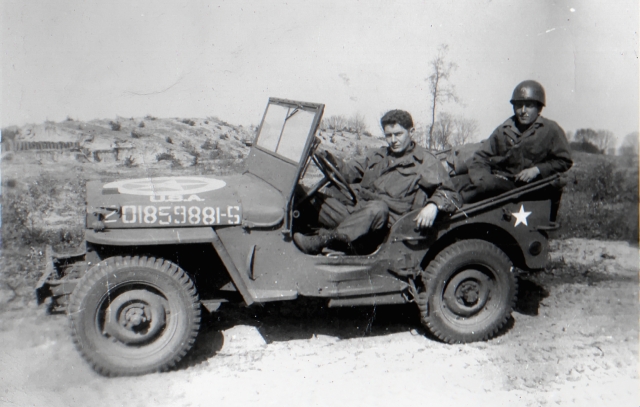
Arty Burgess & Kenneth Figg in a Jeep. taken outside Bergen-op-Zoom, Holland April 1945 (In his own words “I look like a shady-looking character in this one)

Taken outside Bergen-op-zoom Holland
L-R Arty Burgess, Watertown, Mass., Kenneth Figg, and Oscar Dippi, N.Y. City April 1945
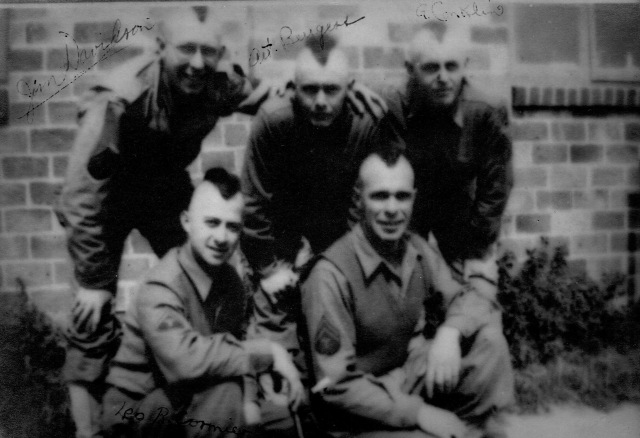
Some members of the “T/5 Machine” with their Indian haircuts, taken at Weymouth, England just before leaving for Normandy. June 1944
Jim Davidson, Art Burgess, A. Conkling?
Leo R Cormier – Possibly Kenneth Figg?
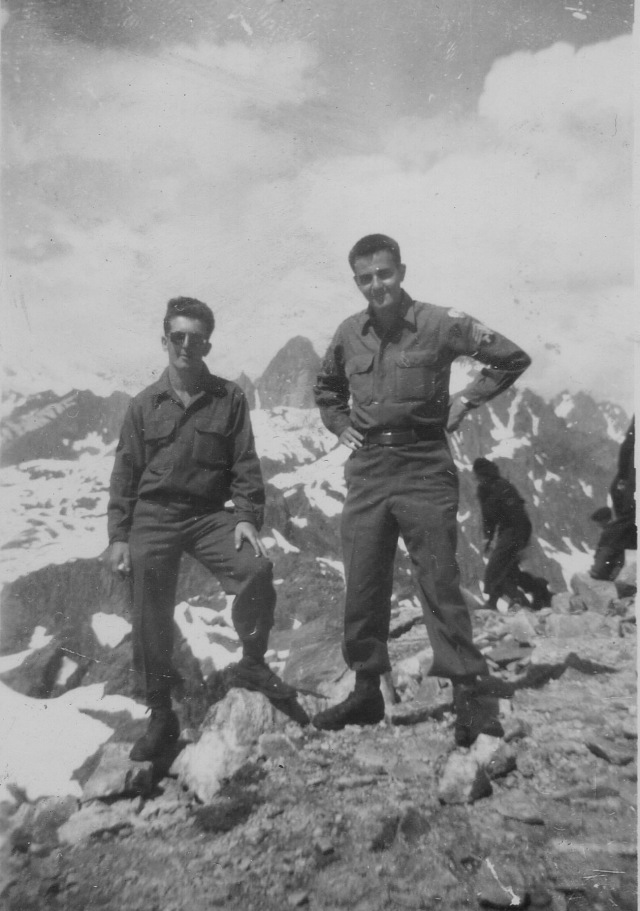
Taken at Chamoix, France on a mountain. Snow in the background and two French-Alpine soldiers in the right of the picture. June 22, 1945
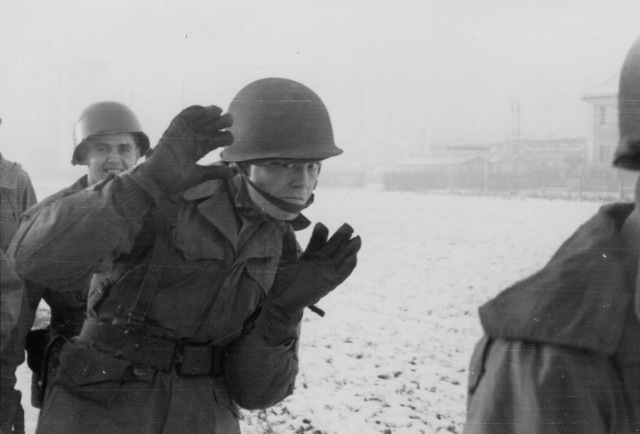
“Mulll” – This appears to be an acquaintance of Figgs. He appears several times. – Kenneth Figg Collection
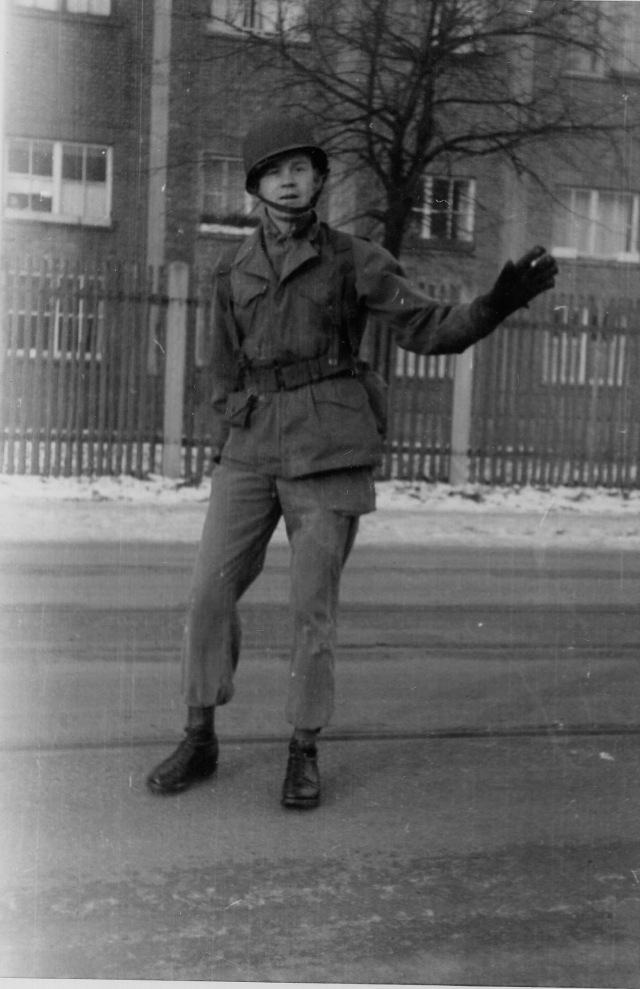
“Mulll” – This appears to be an acquaintance of Figgs. He appears several times. – Kenneth Figg Collection
This story will updated if more is learned from the archives.
Bibliography
1. Wikipedia Fort Devens – http://en.wikipedia.org/wiki/Fort_Devens
2. North Carolina Historic Sites – http://www.nchistoricsites.org/fisher/ww2/ww2.htm
3. Wikipedia Fort Fisher – http://en.wikipedia.org/wiki/Fort_Fisher
4. Wikipedia Camp Kilmer – http://en.wikipedia.org/wiki/Camp_Kilmer
5. Wikipedia Aberdeen Proving Ground – http://en.wikipedia.org/wiki/Aberdeen_Proving_Ground

